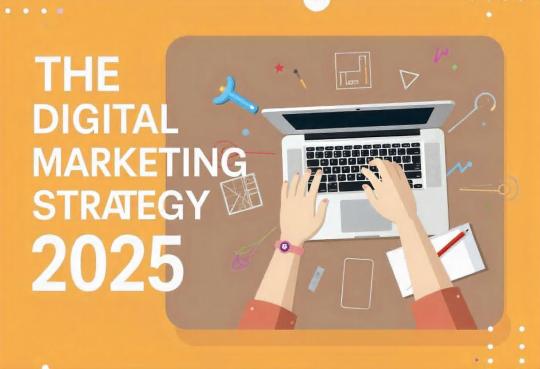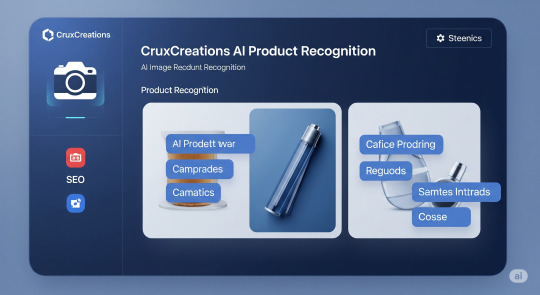#Visual Search
Explore tagged Tumblr posts
Text
Uni work - OC based fake brand
So for my Illustrator class I had to create a logo and typography based of an original character. I decided to use an old oc of mine that I hadn't drawn in a while.
I introduce you to Emerald brew !

Could not post this on insta because of pics formats, but I wanna post it here !
Emerald brew is a brand of tea & tea time accessories, inspired by Japan. The oc I chose for this project is called Satoru. He's a ninja, his nickname is "stealthy emerald" and he enjoys tea a lot. The idea and name come from this.
We were required to make a moodboard for our brand's vibe and colors :

Images searched for this were inspired by Satoru's design, tea sets, japanese tea cups, all to make something simple yet elegant in green tones (dark or pastel preferably) with grey and black.
Visual research for logo :
Design rework for Satoru (will give him an actual new refsheet in the near future)

Chibi-fied version of said design

Visual tests for cup (design based on character)

Pose testing for mini Satoru

Picking favorite poses+cups and testing combos for final version

Typographic work :
Font and color tests



Visual test with final design + chosen fonts to pick the very final design


Aaaand the final result was the first pic so you've seen everything !
This was hard to do on Illustrator (first time I actually used it for a serious project, and yes it was mandatory), but I think I like how it turned out in the end. I got to draw my oc when I hadn't drawn in months, and my mutuals helped me with designs on discord stream. So yeah, it was cool.
Would you want to buy Emerald brew's teacups ?
#drawing#french#ninja#green#fake brand#illustrator#graphic design#typography#logo design#visual search#moodboard#satoru#stealthy emerald#emerald brew#visual research
2 notes
·
View notes
Text
The Australian Digital Marketing Strategy Guide 2025: Navigating the Evolving Landscape

The digital marketing landscape in Australia is more dynamic than ever. As we step into 2025, businesses are facing a rapidly evolving environment driven by technological advancements, shifting consumer behaviours, and increased competition. To thrive, a robust Digital Marketing Strategy is no longer a luxury but a necessity.
This guide will help you navigate the complexities of 2025, highlighting key trends and offering actionable insights to ensure your brand stands out in the Australian market.
1. The AI Revolution: A Game-Changer for Digital Marketing
Artificial Intelligence (AI in marketing) is undoubtedly the most impactful trend for 2025. From content creation to customer service, AI is streamlining workflows, offering unparalleled personalization, and providing real-time data insights. Australian businesses are increasingly adopting AI-driven tools for:
Smarter Advertising: AI optimizes ad spend, identifies target audiences with precision, and even generates ad copy, leading to higher ROI for paid advertising campaigns.
Hyper-Personalization: Leveraging AI and machine learning, marketers can deliver incredibly tailored content, product recommendations, and omnichannel experiences, significantly enhancing customer experience.
Automated Content Creation: AI-powered tools are assisting with drafting emails, articles, and social media posts, freeing up valuable time for strategic thinking. However, the human touch remains crucial for authenticity and brand voice.
Enhanced Customer Service: AI chatbots provide 24/7 support, answer FAQs, and even process bookings, improving efficiency and customer satisfaction.
2. Search Engine Optimization (SEO) in 2025: Beyond Keywords
While SEO remains foundational, its nuances are changing. Google continues to dominate the Australian search market (93% market share!), but how users search is evolving.
Voice Search Optimization: With the rise of smart speakers and voice assistants, optimizing content for conversational, question-based queries is paramount.
Visual Search Growth: Platforms like Google Lens are making visual search more mainstream. High-quality, well-described images will be critical for discoverability.
Generative Engine Optimization (GEO): Search engines are increasingly using AI to provide direct answers and summaries. Structuring your content to be easily digestible by AI will be key to appearing in these "position zero" snippets.
Local SEO: For Australian businesses, especially small and home-based operations, local SEO continues to be vital. Optimizing Google Business Profiles, managing reviews, and targeting local keywords can significantly boost visibility and leads.
3. Content Marketing: Quality and Purpose Reign Supreme
Content marketing is still king, but in 2025, it's all about quality, purpose, and impact. Australian consumers demand authentic storytelling and value-driven content.
Video Marketing Dominance: Short-form video content (TikTok, Instagram Reels, YouTube Shorts) continues to reign supreme for engagement. Long-form educational videos also hold strong value. Brands are using video for testimonials, behind-the-scenes glimpses, and simplifying complex services.
Interactive Content: Quizzes, calculators, and immersive AR/VR experiences are seeing higher engagement rates.
Authenticity and Values: Consumers are drawn to brands that demonstrate ethical practices, sustainability, and inclusivity. Transparent communication about sourcing and production builds trust.
4. Social Commerce and Community Building
Social media is no longer just for brand awareness; it's a primary sales channel.
Social Commerce Expansion: Platforms like Instagram Shop, YouTube's shoppable videos, and TikTok Shop are making in-platform purchasing seamless. Businesses need to integrate their e-commerce strategy with their social media presence.
Influencer Marketing Maturity: Influencer marketing, particularly with micro and nano influencers, offers niche reach and high engagement, fostering trust-based marketing.
Community-Based Marketing: Niche online communities (Reddit, Discord, private groups) are becoming goldmines for engagement and loyalty, especially as traditional platforms like Facebook see shifts in user behaviour.
5. Data-Driven Decisions with a Human Touch
While data and analytics are crucial for refining your digital marketing strategy, 2025 emphasizes a balanced approach.
First-Party Data: With the impending deprecation of third-party cookies, expanding first-party data collection through loyalty programs, newsletters, and on-site surveys will be critical.
Integrated Strategies: Successful marketing in 2025 is integrated across platforms – blending SEO, content marketing, paid advertising, social media, and email marketing into a unified customer journey.
Ethical Data Handling: As privacy concerns grow, transparent and responsible data practices are essential for building consumer trust.
Key Takeaways for Your 2025 Digital Marketing Strategy
Embrace AI: Integrate AI tools for efficiency, personalization, and data analysis.
Optimize for Evolving Search: Prioritize voice and visual search, and understand GEO.
Focus on Quality Content: Create valuable, authentic, and platform-specific content, with a strong emphasis on video.
Leverage Social Commerce: Turn your social media channels into direct sales points.
Prioritize First-Party Data: Build stronger customer relationships through owned channels.
Adaptability is Key: The digital landscape is constantly shifting. Be prepared to test, learn, and adjust your strategy.
Conclusion
By proactively adapting to these trends and investing in a comprehensive digital marketing strategy, Australian businesses can not only survive but thrive in the dynamic digital environment of 2025.
#AI in marketing#paid advertising#customer experience#AI-powered tools#search engine optimization#voice search optimization#visual search#Generative Engine Optimization#local SEO#content marketing#video marketing#influencer marketing#social commerce#community-based marketing#email marketing
1 note
·
View note
Text
Optimizing for Image Search 2.0: Visual Content in the Age of AI
Discover the evolving landscape of image search and how AI-powered product recognition is reshaping visual content optimization. The image shows a sleek interface demonstrating AI recognizing products, highlighting the importance of visual SEO in a modern context.

0 notes
Text
https://www.mosaicworkz.com/blogs/post/voice_visual_search_optimisation_2025
0 notes
Text
10 Best Use Cases of AI in E-Commerce
Artificial intelligence (AI) is revolutionizing the e-commerce industry by enhancing customer experiences, optimizing operations, and driving sales growth. Here are the ten best use cases of AI in e-commerce that are shaping the future of online shopping:

Personalized Product Recommendations AI analyzes customer data, including browsing history and purchase behavior, to provide personalized product recommendations. This enhances the shopping experience by suggesting items that align with individual preferences, leading to increased conversion rates. For instance, Amazon’s recommendation engine significantly contributes to its sales.
Chatbots and Virtual Assistants AI-powered chatbots offer 24/7 customer support, answering queries and assisting with purchases in real time. Brands like Sephora use chatbots to guide customers through product selections and provide styling advice, improving customer satisfaction while reducing the workload on human agents.
Dynamic Pricing AI enables dynamic pricing strategies that adjust prices based on real-time market conditions, competitor pricing, and customer behavior. This allows retailers to optimize their pricing for maximum profitability while remaining competitive in the market.
Inventory Management and Demand Forecasting AI algorithms predict demand trends by analyzing historical sales data, helping businesses manage inventory efficiently. This reduces costs associated with overstocking or stockouts and ensures that popular products are always available.
Visual Search Technology AI-powered visual search allows customers to upload images to find similar products online. This technology enhances product discovery and caters to customers who may not know the exact keywords to use in a search.
Enhanced Customer Segmentation AI helps businesses analyze customer data to create detailed customer segments based on purchasing behavior and preferences. This allows for targeted marketing strategies that resonate with specific groups, improving engagement and conversion rates.
Fraud Detection and Prevention AI systems monitor transactions for unusual patterns that may indicate fraudulent activity. By using machine learning algorithms, e-commerce platforms can detect and prevent fraud in real time, protecting both businesses and consumers.
Automated Marketing Campaigns AI can automate marketing efforts by analyzing customer data to create personalized email campaigns and targeted advertisements. This ensures that marketing messages are relevant and timely, leading to higher engagement rates.
Voice Commerce With the rise of voice-activated devices, AI enables voice commerce capabilities that allow customers to make purchases using voice commands. Retailers like Walmart have integrated voice shopping features with Google Assistant, making the shopping experience more convenient.
Predictive Analytics for Customer Insights AI leverages predictive analytics to provide insights into future customer behavior based on historical data. This helps businesses make informed decisions regarding inventory management, marketing strategies, and product development. Conclusion The integration of AI in e-commerce is transforming how businesses operate and interact with customers. By leveraging these use cases, e-commerce companies can enhance efficiency, improve customer satisfaction, and drive growth in an increasingly competitive landscape.
#ai#artificial intelligence#ecommerce#chatbots#ai technology#business#marketing#visual search#success#branding
0 notes
Text
A Guide to Visual Search Optimization: Preparing for the Next Big Shift
🔍 The Future of Search is Visual – Is Your Brand Ready? 🔍 Visual search is changing the way users discover products and interact with brands online. Imagine your audience finding exactly what they’re looking for with a single photo—no keywords needed!
In recent years, visual search has become an exciting trend in digital marketing. It transforms how users interact with search engines and brands online. With visual search, users can upload an image to a search engine. They can also use their camera to find relevant information about the object they’re seeing. This shift offers businesses new opportunities to reach their audience in ways…
#business development#catalogue shopping#Digital Marketing#Image optimization#Imaging#marketing strategy#seo#Visual Search
0 notes
Text
Found an app where you can search for images by color with an eyedropper tool. Genius, right? It makes it so much easier to find pics that match and look good together in posts.
I’ve even started using it instead of Pinterest sometimes (even though Pinterest is still amazing with years of content that’s hard to beat).
📌It’s called Cosmos
Available on iOS


#CosmosApp#aesthetic#visual search#creativeapp#contentcreation#pinterestalternative#pinterest#tumblr girls#colorsearch#search by color#colors
0 notes
Text
Brands Successfully Implementing Visual Search to Increase Engagement

In today’s fast-paced digital landscape, visual search technology is revolutionizing the way consumers interact with brands. By allowing users to search for products using images instead of text, businesses can significantly enhance customer engagement and drive sales.
Here, we explore several brands that have successfully implemented visual search,highlighting their strategies and the impressive results they’ve achieved.
Pinterest: Leading the Way with Lens Pinterest is a pioneer in visual search technology with its "Lens" feature, which allows users to take a photo of an object and find similar items on the platform. This feature has transformed the user experience by enabling users to discover products they may not have known they were looking for. In a survey conducted by Pinterest, over 80% of users reported that they are more likely to make a purchase when they use visual search. By integrating visual search into their platform, Pinterest has increased engagement significantly, with users spending more time on the platform discovering visually appealing content.
ASOS: Enhancing the Shopping Experience British fashion retailer ASOS has embraced visual search by allowing customers to upload images of clothing they like, which then generates a selection of similar products available for purchase on their website. This feature not only enhances the shopping experience but also allows ASOS to cater to consumer desires more effectively. ASOS reported that customers who engage with the visual search feature are 25% more likely to complete a purchase compared to those who do not. By removing barriers to product discovery, ASOS has successfully increased its sales conversions and improved customer satisfaction.
Wayfair: Revolutionizing Home Décor Shopping Wayfair, a leading online retailer for home goods, uses visual search technology to help customers find furniture and decor items that match their desired style. By allowing users to upload photos of rooms they admire or items they want to replicate, Wayfair can recommend similar products from its extensive catalog. Wayfair’s implementation of visual search has led to a 30% increase in user engagement and a significant boost in average order value. Their visual search functionality not only simplifies the shopping experience but also enhances the likelihood of upselling by presenting customers with curated options that align with their tastes.
IKEA: Bringing Visual Search to the Home IKEA has incorporated visual search into its mobile app, enabling users to take pictures of items they like and receive suggestions for similar products available at IKEA. This integration not only assists customers in finding products but also enhances their overall shopping experience. Since launching this feature, IKEA has seen a notable increase in app engagement, with a 25% rise in the number of users utilizing the visual search capability. By bridging the gap between inspiration and purchase, IKEA effectively drives foot traffic to their stores and increases online sales.
eBay: Transforming the Resale Market eBay has harnessed visual search technology to help buyers find items by uploading images. This feature is particularly beneficial in the resale market, where users may have specific products in mind but lack the exact keywords to search for them. eBay’s visual search functionality has resulted in a 15% increase in user engagement on their mobile app. The ability to search visually has also expanded the audience for sellers, making it easier for them to reach potential buyers who may not be familiar with the item’s name or description. Conclusion The integration of visual search technology is becoming increasingly crucial for brands aiming to enhance customer engagement and boost sales. As demonstrated by companies like Pinterest, ASOS, Wayfair, IKEA, and eBay, the ability to search using images streamlines the shopping experience and caters to modern consumer behavior. However, to fully leverage the benefits of visual search, having a well-designed and functional website is equally important. A good website enhances customer experience by providing intuitive navigation, fast loading times, and mobile responsiveness. These elements ensure that users can seamlessly interact with visual search features, find the products they want, and complete their purchases without frustration. For businesses looking to optimize their online presence, investing in professional website design is essential. If you're considering a website revamp or development, explore the top 10 website design companies in Kolkata. These experts can help create a visually appealing and highly functional website that enhances user experience, supports visual search capabilities, and ultimately drives sales growth. Investing in both visual search technology and a quality website will set your business up for success in today’s competitive digital landscape.
0 notes
Text
Amazon Follows Google Into Visual Search To Strengthen Shopping:
1 note
·
View note
Text
0 notes
Text
How Vision AI is Personalizing the Customer Experience
In today’s rapidly evolving digital landscape, customer experience has become a crucial differentiator for businesses. Traditional methods of personalization, such as targeted emails and tailored product recommendations, are now standard practice. However, the advent of Vision AI (Artificial Intelligence) is transforming how businesses interact with customers, offering unprecedented levels of personalization and engagement. Vision AI, which involves the use of machine learning and computer vision to interpret and understand visual data, is enabling businesses to create highly individualized experiences that cater to the unique preferences and behaviors of each customer.
Understanding Vision AI
Vision AI refers to technologies that enable machines to gain high-level understanding from digital images or videos. It encompasses various techniques such as image recognition, object detection, facial recognition, and scene interpretation. By mimicking human vision, Vision AI can analyze visual data in real time, making it a powerful tool for personalizing the customer experience across multiple industries.
Enhancing Retail Experiences
One of the most significant applications of Vision AI in retail is in creating immersive and personalized shopping experiences. Traditional retail has been revolutionized by e-commerce, but Vision AI is bridging the gap between online and offline shopping by offering enhanced customer experiences.
Personalized In-Store Assistance
Vision AI-powered cameras and sensors can track customer movements and behaviors in real time. By analyzing this data, stores can offer personalized assistance and recommendations. For instance, when a customer spends a significant amount of time in a particular section, Vision AI can alert store associates to offer help or suggest related products, enhancing the shopping experience.
Smart Mirrors and Virtual Try-Ons
Smart mirrors equipped with Vision AI allow customers to virtually try on clothes and accessories. These mirrors use augmented reality (AR) to overlay products onto the customer’s reflection, providing a personalized fitting experience without the need for physical trials. This technology not only improves customer satisfaction but also reduces return rates, as customers can make more informed purchasing decisions.
Customer Behavior Analysis
Vision AI can analyze customer behavior patterns to offer personalized promotions and discounts. By understanding which products customers frequently interact with or purchase, retailers can tailor their marketing strategies to individual preferences. This level of personalization can significantly boost customer loyalty and increase sales.

Revolutionizing Online Shopping
E-commerce platforms are leveraging Vision AI to provide highly personalized and engaging online shopping experiences. The ability to analyze visual content in real-time enables online retailers to understand and predict customer preferences more accurately than ever before.
Visual Search
Traditional text-based searches can sometimes be limiting for customers who are unsure how to describe what they are looking for. Vision AI enables visual search functionality, allowing customers to upload images of desired products and find similar items instantly. This feature not only enhances the user experience but also increases the likelihood of conversion by making the search process more intuitive and efficient.
Personalized Recommendations
Vision AI can analyze customers’ visual preferences based on their browsing history and interactions with images and videos. By understanding color preferences, style choices, and visual aesthetics, AI can offer highly personalized product recommendations. For example, if a customer frequently browses floral patterns, the AI can prioritize showing them products that match this preference.
Dynamic Content Customization
E-commerce platforms can use Vision AI to dynamically customize content for each user. By analyzing visual data and user behavior, websites can display personalized banners, advertisements, and product suggestions. This ensures that each customer has a unique and relevant shopping experience, increasing engagement and conversion rates.
Transforming Customer Service
Vision AI is also revolutionizing customer service by enabling more efficient and personalized interactions. The ability to analyze visual data in real-time can significantly enhance the quality of customer support and improve overall satisfaction.
Facial Recognition for Personalized Interactions
Facial recognition technology can identify customers and retrieve their purchase history, preferences, and previous interactions with the brand. This allows customer service representatives to offer highly personalized assistance, addressing the customer by name and providing relevant information quickly. Such personalized interactions can enhance the customer’s perception of the brand and foster loyalty.
Visual Customer Support
Vision AI can be used to provide visual customer support, enabling customers to share images or videos of issues they are facing. Support agents can then analyze this visual data to diagnose problems and offer precise solutions. For example, if a customer is having trouble assembling a product, they can share a video of the issue, and the AI can guide them through the steps to resolve it. This reduces resolution times and improves the overall customer experience.
Automated Support with Visual Data
Chatbots and virtual assistants equipped with Vision AI can handle customer queries that involve visual data. For instance, customers can upload images of damaged products, and the AI can assess the damage and process returns or replacements automatically. This level of automation streamlines customer service processes and ensures quick and efficient resolutions.
Elevating the Entertainment Industry
The entertainment industry is another sector where Vision AI is making significant strides in personalizing the customer experience. By analyzing visual data from videos and images, AI can offer tailored content recommendations and enhance user engagement.
Personalized Content Recommendations
Streaming platforms use Vision AI to analyze viewers’ watching habits and preferences. By understanding the visual elements that resonate with each user, such as genre, actors, and cinematography, AI can recommend personalized content. This not only enhances the viewing experience but also keeps users engaged by continuously offering relevant and appealing suggestions.
Interactive and Immersive Experiences
Vision AI is also enabling more interactive and immersive experiences in entertainment. For example, augmented reality (AR) and virtual reality (VR) applications use computer vision to create personalized and engaging experiences. Users can interact with virtual environments tailored to their preferences, making entertainment more immersive and enjoyable.
Enhancing Social Media Engagement
Social media platforms leverage Vision AI to analyze user-generated content and interactions. By understanding the visual preferences and behaviors of users, these platforms can personalize content feeds, advertisements, and recommendations. This ensures that users see content that is most relevant and engaging to them, enhancing their overall experience on the platform.
Improving Healthcare Services
In the healthcare sector, Vision AI is transforming patient care by offering personalized medical services and improving diagnostic accuracy. The ability to analyze visual data in real-time is enabling healthcare providers to deliver more precise and tailored treatments.
Personalized Treatment Plans
Vision AI can analyze medical images such as X-rays, MRIs, and CT scans to identify specific conditions and recommend personalized treatment plans. By comparing visual data from numerous patients, AI can identify patterns and suggest the most effective treatments for individual patients. This level of personalization can significantly improve patient outcomes.
Remote Patient Monitoring
Vision AI is also enhancing remote patient monitoring by analyzing visual data from wearable devices and home monitoring systems. This technology can detect changes in a patient’s condition in real-time and alert healthcare providers to take immediate action. Personalized alerts and recommendations ensure that patients receive timely and appropriate care, even from a distance.
Enhancing Telemedicine
Telemedicine services are benefiting from Vision AI’s ability to analyze visual data during virtual consultations. Doctors can use AI-powered tools to examine patients remotely, ensuring accurate diagnoses and personalized treatment recommendations. This improves the quality of care and makes healthcare more accessible to a broader population.
Conclusion
Vision AI is revolutionizing the way businesses personalize the customer experience across various industries. By leveraging the power of visual data, companies can create highly individualized and engaging interactions that cater to the unique preferences and behaviors of each customer. From retail and e-commerce to customer service, entertainment, and healthcare, Vision AI is enabling businesses to offer more relevant, efficient, and satisfying experiences. As this technology continues to evolve, its potential to transform the customer experience and drive business success will only grow, making it an essential tool for any forward-thinking organization.
Source: https://inferencelabs.blogspot.com/2024/06/how-vision-ai-personalizing-customer-experience.html
#Compute Vision#Customer experience#Inference Labs#Vision AI#Vision AI technology#Visual data analysis#Visual search
0 notes
Text
Visual Search: Complete Guide
What is Visual Search?
Visual search allows users to search for information using images instead of typing a text or keyword. This option is especially useful when people don’t know how to describe what they are looking for using accurate words. Using screenshots, photographs, or Internet images and uploading them to search engines like Google Lens or Amazon StyleSnap, online shoppers can find the products they wish to buy. Visual search can also be used to find more information about any search query as well. But how does visual search work?
Visual search uses artificial intelligence and works by combining computer vision and machine learning. When users take a photograph of something they are looking for, the software identifies the image and offers similar search results.
0 notes
Text
Introspection on Fast Simon’s AI-powered search engine
Fast Simon’s AI-powered search engine #AI #ecommerce #ArtificialIntelligence #FastSimon
Fast Simon, formerly known as InstantSearch+, caters to services in the e-commerce sector. A range of AI-driven features are offered for optimizing the shopping experience. The company is based in Silicon Valley, California and it was founded by Zohar Gilad and Adar Greenshpon. Let’s delve into how Fast Simon’s AI-powered search engine improves the accuracy and relevancy of the search results…

View On WordPress
0 notes
Text

Ready to future-proof your SEO strategy? Check out our latest blog on voice and visual search optimisation! Discover how AI-driven voice assistants and image-based tools are shaping the digital world, and learn actionable tips to keep your brand visible in 2025 and beyond. Don’t miss out—stay one step ahead in the evolving arena of search technology!
1 note
·
View note
Text
THE POWER OF VISUAL SEARCH IN SEO AND PPC CAMPAIGNS
Visual search is transforming SEO and PPC campaigns by allowing users to interact with content through images, leveraging AI for intuitive, image-based searching. This evolution requires businesses to adapt their digital marketing strategies to include high-quality, well-tagged images and structured data, enhancing visibility in visual search results. For PPC, visual product ads and optimized content for visual platforms are key.
Discover how to integrate visual search into your marketing strategies at: https://tridigiam.com/the-power-of-visual-search-in-seo-and-ppc-campaigns/
0 notes
Text
Next-Gen Shopping: Embracing AI's Influence on E-commerce

In the ever-evolving world of e-commerce, where technology is constantly pushing the boundaries, there is one revolutionary force that stands out from the rest: artificial intelligence (AI). With its ability to process massive amounts of data, comprehend customer behavior and deliver personalized experiences, AI has become the secret weapon for online businesses. Today, we start on an exhilarating journey to explore how AI is unleashing its power in the realm of online shopping, propelling us into a future where possibilities know no boundaries.
Chatbots: Your Shopping Companions
Imagine entering a virtual shopping paradise, surrounded by a plethora of products and choices. Suddenly, a friendly virtual assistant pops up to offer guidance and support. Meet chatbots, intelligent shopping companions powered by AI. With their conversational prowess and round-the-clock availability, chatbots have revolutionized customer service. They can answer your queries, provide product recommendations tailored to your preferences and even assist in processing your orders seamlessly. It’s like having your own exclusive shopping advisor, ready to make your shopping experience an absolute breeze.
Unique Recommendations: Your Stylish Sidekick
Bid farewell to the days of aimlessly wandering through countless product pages, desperately searching for that perfect item. Thanks to AI, e-commerce platforms now offer personalized product recommendations that cater to your unique taste and style. By diving deep into your browsing history, purchase patterns and even your social media activity, AI algorithms have the power to predict your future needs and present you with a curated selection of products that align with your preferences. It’s like having a stylish sidekick who understands your fashion sensibilities inside out, making your shopping journey not only efficient but also enjoyable.
Visual Search: Unlocking the Shopper’s Imagination
Ever stumbled upon a captivating image of a fashion ensemble or a stunning piece of furniture and wished you could instantly find something similar? With AI-powered visual search technology, your wish is granted. By harnessing the extraordinary capabilities of computer vision, AI algorithms can analyze the visual elements of an image and identify the products within it. Whether it’s a dazzling dress or a unique home decor item, visual search bridges the gap between inspiration and acquisition. Simply upload a photo and voilà! The virtual world becomes your own shopping playground, offering you similar items that match your desired style.
Inventory Management: Orchestrating Efficiency
Behind every successful e-commerce operation lies a symphony of inventory management and AI takes center stage. By meticulously analyzing historical sales data, market trends and even external factors like weather patterns, AI algorithms can accurately forecast demand and optimize inventory levels. This ensures that the right products are available at the right time, minimizing stockouts and maximizing customer satisfaction. It’s like a beautifully orchestrated symphony, where AI conducts a seamless shopping experience, keeping customers and businesses in perfect harmony.
Fraud Detection: Safeguarding the Digital Frontier
In the vast expanse of them to established patterns, AI algorithms can identify fraudulent transactions and prevent unauthorized access. This not only shields businesses from financial losses but also cultivates trust and confidence among customers, ensuring a secure and worry-free shopping experience.r, security is of utmost importance. This is where AI becomes the guardian angel of e-commerce businesses and their customers, protecting them against fraudulent activities. Advanced fraud detection systems empowered by AI can swiftly detect suspicious patterns and behaviors in real-time. By sifting through mountains of data and comparing the Digital Frontier
Artificial intelligence has unleashed an unparalleled wave of transformative potential in the world of e-commerce. From chatbots providing specialized assistance to visual search technology fueling the shopper’s imagination, AI is revolutionizing the way we shop, discover and connect with brands online. As we venture into this exciting future, it’s crucial to harness the power of AI responsibly, prioritizing transparency, privacy and ethical considerations. So, buckle up and get ready to embark on an extraordinary journey into the limitless possibilities of AI in e-commerce. The future of shopping is calling and it’s time to unleash its full potential.
0 notes